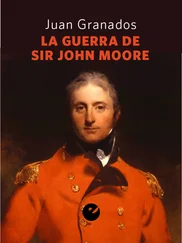Thus, the simplistic, mechanistic conception, in which the problem of motivation was reduced to finding incentives (financial or otherwise) to offer him as a stimulus to carry out his work, is replaced by another conception in which it is acknowledged that motivation depends on much more complex factors than incentives offered. Some of these factors have been identified as realities originating in the social interactions that result from the work itself (Hawthorne experiments).
From that time on (we are now talking about the 1940s) a large number of people-academics and managers-abandoned the naive mechanistic conception. Their efforts were now primarily aimed at obtaining a deeper knowledge of the motives that induce people to work and, consequently, the needs that they seek to satisfy in their work.
A clear example of this shift in attitude can be found in the work of Chester Barnard, The Functions of the Executive (perhaps the work that has most influenced modem conceptions of human organizations since it was first published in 1938, with a reprint virtually every two years since), with statements such as the following:
I have found it impossible to go far in the study of organizations or of the behavior of people in relation to them without being confronted with a few questions which can be simply stated. For example: “What is an individual?” “What do we mean by a person?” “To what extent do people have a power of choice or free will?” The temptation is to avoid such difficult questions, leaving them to the philosophers and scientists who still debate them after centuries. It quickly appears, however, that even if we avoid answering such questions definitely, we cannot evade them. We answer them implicitly in whatever we say about human behavior; and, what is more important, all sorts of people, and especially leaders and executives, act on the basis of fundamental assumptions or attitudes regarding them, although these people are rarely conscious that they are doing so 2.
Given the authority of Chester Barnard, it is perhaps useful to reproduce something he says in the preface to his book about the experiences that led him to research and write on the subject:
At least this I can assert: though I early found out how to behave effectively in organizations, not until I had much later relegated economic theory and economic interests to a secondary—though indispensable—place did I begin to understand organizations or human behavior in them. I do not mean merely that non-economic organizations—such as the political, the educational, the religious—are also to be found, and are of primary importance; I mean specifically with reference to business organizations that non-economic motives, interests, and processes, as well as the economic, are fundamental in behavior from the boards of directors to the last man. The contrary view is almost always implicit and frequently explicit in the statements not only of businessmen but of labor men, politicians, statesmen, professional men, educators, and even of church ministers. As one result, effective leadership has to be based on intuitions that are correct, notwithstanding doctrines that deny their correctness. Very often, I think, we attempt social integration by methods imposed by a false logic to the very limit that common sense and hard experience will permit.
This maturity in the awareness of the need to research man and what moves him to act in order to formulate a true theory, one able to improve practical action in companies, has guided a multitude of investigations.
The underlying conception in these investigations is no longer the mechanistic but rather what we call the psycho-sociological conception. They all study the business organization as a social organism, in which, obviously, economic goods are produced and distributed, but whose complete reality cannot be visualized or understood if one looks only at processes that take place on the economic level.
As regards our subject, the motivation to work in business organizations, people are starting to take notice of the work of a number of scientists, mainly from the field of psychology, who study human motivations in general, usually with no specific reference to the business world. Perhaps the most influential figure in this area is Abraham Maslow and his work Motivation and Personality 3. Maslow's theory has two different parts:
1. It establishes a hierarchy of human needs.
2. It postulates a dynamism by which the motivations to satisfy these needs appear.
He classifies needs under five headings:
Physiological: Food, rest, protection against the elements, etc.
Security: Protection against possible wants and dangers.
Social: Giving and receiving of affection, feeling accepted by others, etc.
Self-esteem: Appreciation of one's own qualities (professional competence, knowledge, etc.) and feeling appreciated by others.
Self-realization: Development and use of all of one's potential.
Regarding the dynamism by which the motivations to satisfy these needs appear, Maslow's theory postulates that the motivation to satisfy a higher-level need only appears, and is operative, once the lower-level needs are satisfied. Thus, for example, a person will be motivated to seek the satisfaction of his needs for security once his physiological needs are reasonably satisfied; in the same way, he will only seek to satisfy his needs for self-realization once the previous four levels are reasonably satisfied, and so on.
In fact, Maslow's theory is more of a framework to aid observation (and to describe what is observed) than a theory in the true sense of the word. The types of needs it addresses are no more than a series of classifying categories of the entire range of realities that seem to motivate human action.
The advantage of his categories is that they are very open-ended, and in this sense help to avoid the facile simplifications that tend to reduce the motives for human actions to the desire to achieve too-limited objectives (money, comfort, admiration, etc.); as a result of their rich descriptiveness, they tend to draw attention to the breadth and range of goals that people pursue when they act. The main drawback of the framework lies in the lack of nexus with a conception of the human being (its lack of an anthropological theory) that would explain and draw together this series of realities that people seek to obtain through their actions.
Maslow's model is even weaker when it comes to the dynamism postulated to account for the appearance of the motivation that stimulates a person's actions. In many cases people are moved to satisfy higher-level needs (and with motivations so strong that they are prepared to accept any sacrifice to satisfy them) in conditions of almost absolute non-satisfaction of other, lower-level needs. This usually occurs precisely in the case of people we all admire, people who stand out for their human quality.
It must be admitted that Maslow was veiy much aware of the limitations of his approach: he always maintained that his theory was mainly useful as a framework for future research. The exaggerations observed in the implementation of this theory are the result of simplifications made by people in search of support for techniques they wished to develop for immediate practical purposes.
Maslow's work is concerned with the general field of individual psychology, without any specific reference to businesses. At the end of the 1950s and throughout the 1960s, Frederick Herzberg carried out his research and formulated his theory (often called “hygiene-motivation”) on the motives that influence work in business organizations 4.
In many of its aspects, the theory includes ideas present in Maslow's. Herzberg identified two types of factors that influence motivation: hygiene factors and motivating factors as such, including, in each type respectively, those that affect the satisfaction of lower-order needs (hygienic factors) and those that affect the satisfaction of higher-order ones (motivating factors).
Читать дальше












